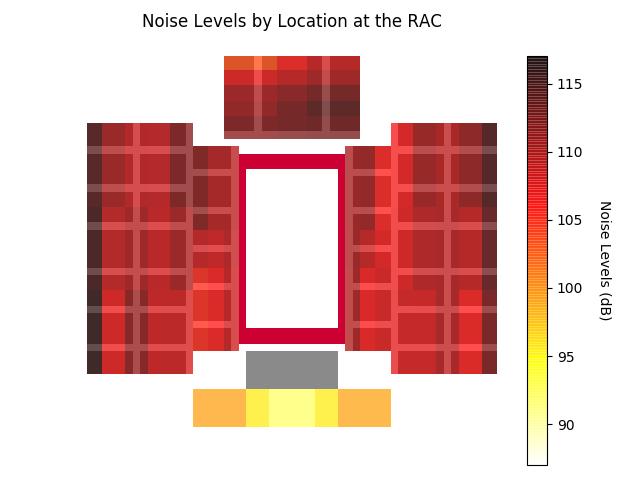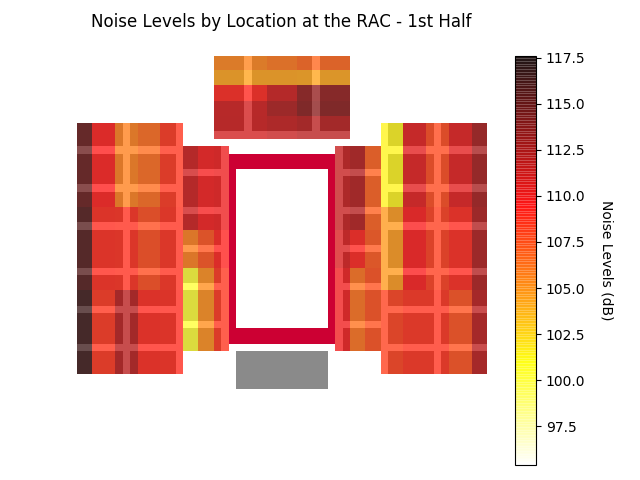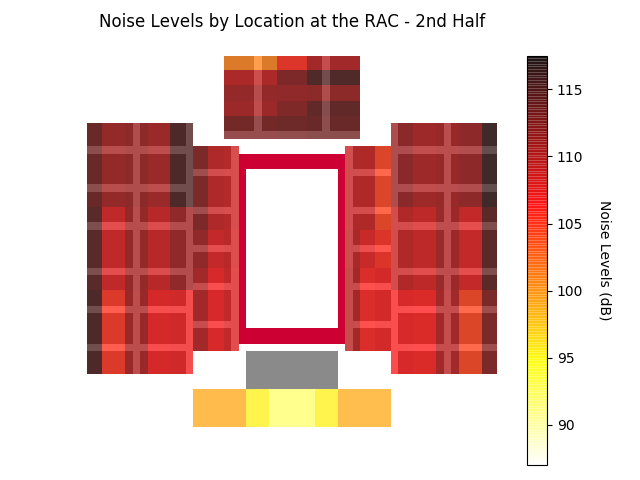The Rutgers Men’s Basketball team no doubt had a breakout season in 2019-20. Projected to make the March Madness tournament for the first time since 1991, they were a sure contender for a decent seed had the season not ended early. With an astonishing home record of 18 wins and 1 loss, one of the best in the nation, there is no doubt that the Rutgers Athletic Center played host to some incredible games. Some opponents named the RAC as one of the toughest places to play college basketball. I was fortunate enough, along with the Rutgers Society of Physics Students, to take a firsthand look at what made the RAC so special: its sound.
The distinctive trapezoidal shape of the RAC stands tall next to a new business building and student apartments on Rutgers University’s Livingston campus. Opened in 1977, the 8,000 seat arena replaced the College Avenue Gym (affectionately nicknamed “The Barn”) as the home of the men’s and women’s Scarlet Knight basketball teams. The building has stood through the ups and downs of Scarlet Knights basketball, and holds a special place in my heart. I’ve been watching Rutgers play there since I was in elementary school, before the Jumbotron hung in the center. There was no way I would turn down an opportunity to investigate the magic that surrounded the so-called “Trapezoid of Terror.”
After preliminary tests at home games against the Universities of Illinois and Michigan, a full scale study of the final home game of the season against the University of Maryland was put into motion. Armed with pens, data-taking sheets, decibel meters, and clipboards, four SPS officers dispersed to predetermined locations across the RAC, synchronized by the game clock. For every thirty seconds of gameplay, we recorded the peak decibel levels achieved in our specific section before moving to the next location. The pattern was repeated once in each half for more accurate readings. While this is not the ideal scenario of constant decibel level readings at all sections of the arena, it provides the best compromise and offers the most complete picture obtainable with the resources available. Time stamps were also noted so particular spikes could be cross referenced with a recording of the game broadcast.
The results for the entire game, a heatmap of the loudest areas overlaid onto a rough diagram of the RAC, is displayed below, followed by diagrams for the first and second half individually.



One of the most noticeable things in these diagrams for someone who has attended a game at the RAC is the sheer loudness of the band. Located close to the court at the rightmost edge of the student section (the area at the top of the diagram), it produced some of the loudest readings overall. The compact nature of the RAC that forces the band to be so close really helps drive the atmosphere provided by the thousands of fans packing the stands.
Beyond the student section, we also note that at the highest seats we see significant increases in noise levels. This seems to be due to the compact areas near the rafters surrounded by flat surfaces that creates a sort of chamber while focusing noise towards the court. The trapezoidal shape of the RAC may help refocus sound “leaking” away from either end, but these regions along the sides of the arena push the energy of the crowd towards the court.
While we obviously weren’t able to get readings from the playing surface itself, we can see from readings taken close to the court that noise levels see a slight increase as we get nearer. It isn’t a huge leap to assume the energy we see on the court is being fueled by the cheers of Scarlet Knight fans throughout the arena, further amplified and redirected by the shape and materials of the building itself.
All in all, it seems to be the large, flat surfaces that give the RAC its characteristic shape also help redirect the energy of the Scarlet Knights’ amazing fans towards the court. Through the efforts of supporters, students, and the band alike, driven by an outstanding pair of basketball teams putting on incredible performance, the RAC has truly earned the nickname the “Trapezoid of Terror.” Further investigation through simulation and more controlled data taking will only help unlock more of the secrets of what makes the RAC a formidable place to play college basketball.
I would like to take a moment to thank Mr. Evan Feinstein, Director of Marketing and Fan Experience for Rutgers Athletics, for providing equipment and access for this study. Additionally, I want to note the contributions of my fellow SPS officers Skanda Rao, Chong Xia, and Riya Prabhudesai in helping collect and analyze data for this project.
